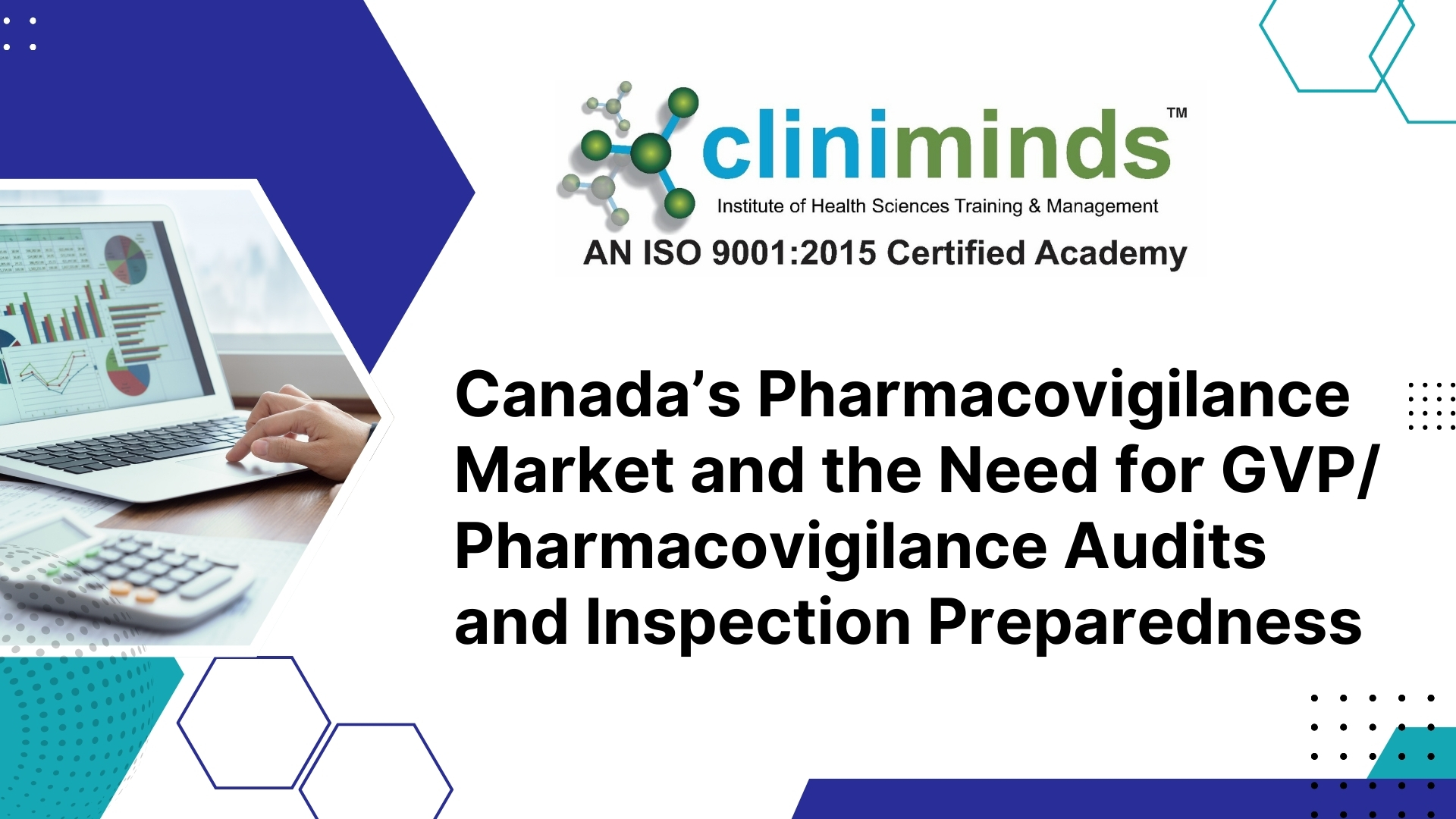Canada’s Pharmacovigilance Market and the Need for GVP / Pharmacovigilance Audits and Inspection Preparedness

Introduction to Canada's Pharmacovigilance Market
Canada's pharmaceutical and biotechnology industries have been growing rapidly, with an increasing focus on ensuring drug safety and monitoring adverse effects. The regulatory framework surrounding pharmacovigilance in Canada is designed to safeguard public health by ensuring that medicinal products are continuously monitored for safety after their approval. With advancements in biotechnology, Canada has witnessed a surge in new drug approvals and market entries, which necessitates robust pharmacovigilance practices to address safety concerns and ensure compliance with international standards.
Canada's pharmacovigilance practices are governed by Health Canada's Regulatory Requirements for Drug Safety, which are in line with international standards such as the International Council for Harmonisation (ICH) Good Pharmacovigilance Practices (GVP). These regulations require pharmaceutical companies, biotech firms, distributors, and other stakeholders to maintain strong pharmacovigilance systems to track, assess, and report any adverse drug reactions (ADRs) or safety signals.
Importance of Good Pharmacovigilance Practices (GVP) in Canada
Good Pharmacovigilance Practices (GVP) are crucial for ensuring drug safety and monitoring potential risks associated with marketed medicinal products. In Canada, GVP is a part of the regulatory framework provided by Health Canada's Market Authorization Regulations and the Food and Drugs Act. GVP includes various processes, such as:
- Reporting of Adverse Drug Reactions (ADRs) – Companies are required to report any serious ADRs within 15 days to Health Canada. This ensures that timely actions are taken if the safety of a product is at risk.
- Signal Detection and Risk Management – GVP mandates that companies engage in signal detection to identify potential safety concerns. This involves analyzing spontaneous reports, literature, and other data sources to uncover potential risks.
- Periodic Safety Update Reports (PSURs) – Regularly submitted PSURs to Health Canada allow authorities to assess the benefit-risk profile of a product, ensuring its continued safety for the public.
- Pharmacovigilance System Master File (PSMF) – The PSMF is a key component that outlines a company's pharmacovigilance system, including staffing, processes, and responsibilities, to ensure that adverse reactions are handled appropriately.
Need for Pharmacovigilance Audits in Canada
Pharmacovigilance audits are critical for ensuring compliance with GVP and other regulatory requirements. In Canada, regular audits of pharmacovigilance systems are essential for ensuring that local pharmaceutical companies, biotech firms, and their business partners are operating within the prescribed safety guidelines. Audits assess the integrity of pharmacovigilance processes, identify weaknesses, and ensure that proper measures are in place to manage ADRs and product safety.
Pharmacovigilance audits typically focus on:
- Data Integrity and Documentation – Ensuring that all adverse reaction reports are accurately recorded and archived.
- Compliance with Regulatory Guidelines – Assessing whether companies adhere to the regulatory guidelines set by Health Canada, GVP, and international standards.
- Staff Training and Competency – Verifying that pharmacovigilance personnel are adequately trained in managing ADRs and related processes.
- Signal Detection and Risk Assessment – Evaluating the effectiveness of safety signal detection systems in place within the company.
Pharmacovigilance audits help detect gaps in safety monitoring and reduce risks of non-compliance, ensuring that safety-related concerns are proactively addressed.
Inspection Preparedness Needs for Local Pharma, Biotech Companies, and Distributors
Regulatory inspections are an integral part of ensuring compliance with pharmacovigilance regulations. In Canada, Health Canada conducts inspections of pharmaceutical companies, biotech firms, distributors, and business partners to ensure that safety monitoring and adverse reaction reporting are carried out effectively.
Challenges for Local Pharma and Biotech Companies
Local pharmaceutical and biotech companies often face challenges in maintaining inspection readiness. These challenges include keeping up with evolving regulatory requirements, ensuring compliance with global pharmacovigilance standards, and managing complex safety data.
To address these challenges, companies need to develop a robust inspection preparedness strategy. This includes:
- Internal Audits: Regular internal audits help identify gaps in the pharmacovigilance system before an inspection occurs. Internal audits focus on verifying the proper handling of adverse event reports, tracking ongoing safety studies, and ensuring that all regulatory requirements are met.
- Mock Inspections: Performing mock inspections helps to prepare for actual regulatory inspections. These mock inspections simulate real-world scenarios and help identify any procedural or documentation shortcomings that might arise during a formal inspection.
- Staff Training: Having a team that is well-prepared for an inspection is crucial. Pharmacovigilance staff should be trained on how to handle questions from regulators, how to present safety data, and how to discuss corrective actions in case of findings.
- Record Management: Maintaining proper documentation is critical. All reports, data, and communications related to pharmacovigilance should be accurately filed and easily accessible during an inspection. This ensures that regulatory authorities can review compliance without delays.
- Engagement with External Partners: Local companies should also ensure that their business partners and distributors are adhering to regulatory standards. This includes evaluating the quality of pharmacovigilance practices throughout the supply chain to ensure that no safety concerns are overlooked.
Conclusion
In conclusion, Canada's growing pharmaceutical and biotech sectors are witnessing a rising need for robust pharmacovigilance systems to ensure drug safety and regulatory compliance. The implementation of Good Pharmacovigilance Practices (GVP) is essential for safeguarding public health and maintaining the integrity of the drug approval process. Pharmacovigilance audits and inspection preparedness are critical for local pharma companies, biotech firms, distributors, and business partners to meet regulatory expectations and improve safety outcomes.
By prioritizing audits and preparing for inspections, Canadian pharmaceutical companies and their stakeholders can enhance their compliance with both national and international regulations, ensuring that they remain competitive while safeguarding patient safety.
References
- Health Canada (2020) -"Regulatory Requirements for Drug Safety."
- International Council for Harmonisation (ICH) (2021) -"Good Pharmacovigilance Practices (GVP)."
- GVP Module: Pharmacovigilance Guidelines (2021) -European Medicines Agency.
- CRQA (2022) -"Pharmacovigilance Audits and Inspection Readiness."



